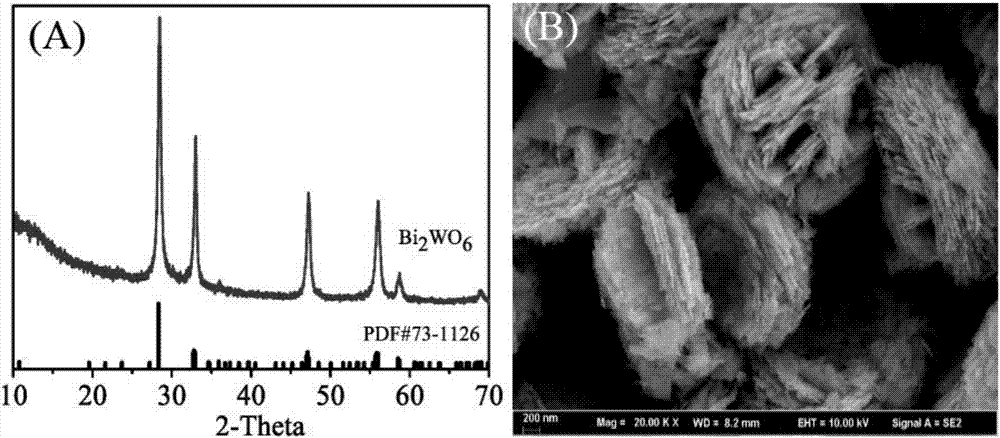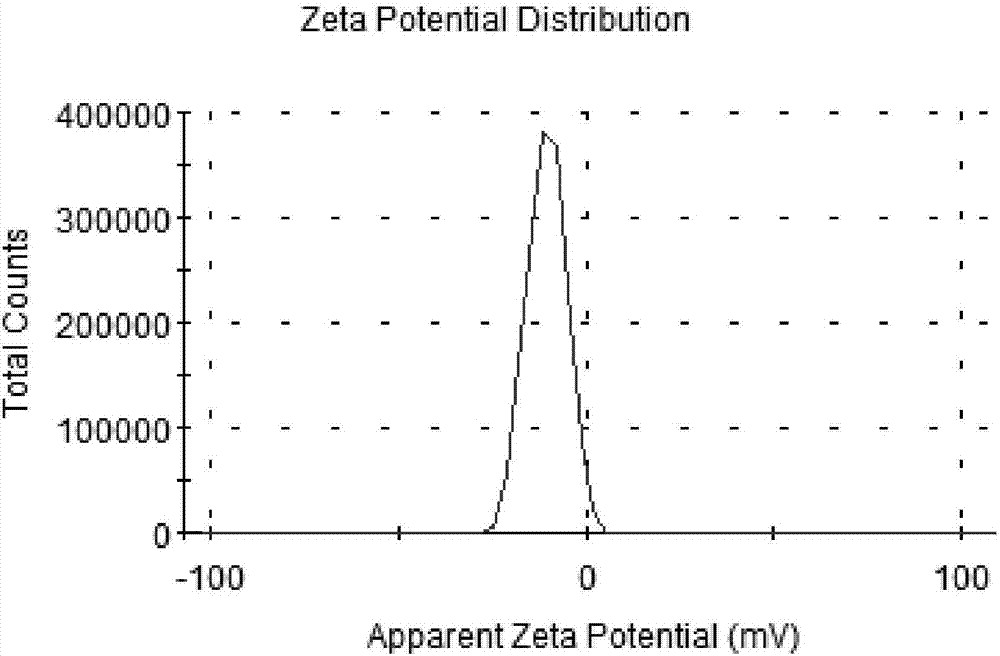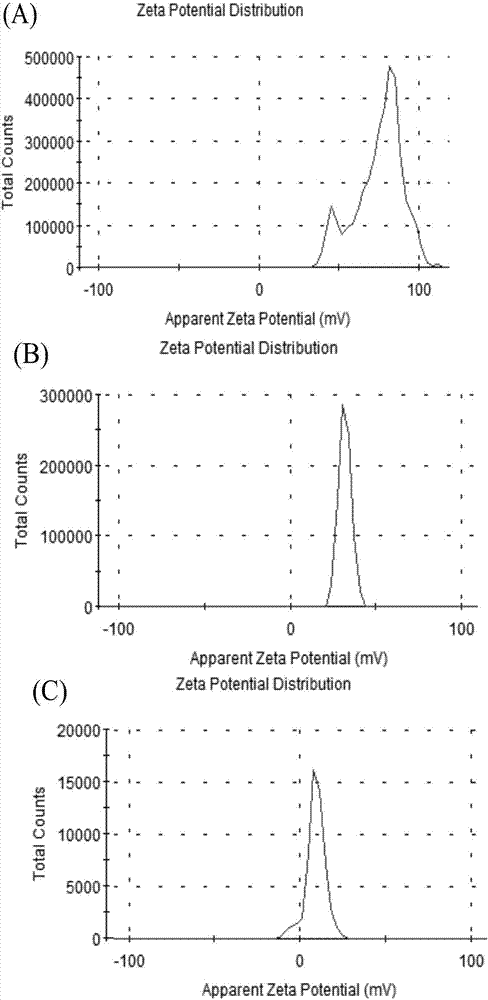Method for rapidly removing aromatic N-alkyl dyestuff
An aromatic and alkyl technology, applied in the field of photocatalytic degradation
- Summary
- Abstract
- Description
- Claims
- Application Information
AI Technical Summary
Problems solved by technology
Method used
Image
Examples
Embodiment 1
[0020] Example 1 Adding bismuth tungstate to the mixed solution of chloroauric acid and rhodamine B for photocatalytic experiment
[0021] (1) Prepare rhodamine B (RhB), methyl violet (MV), and methylene blue (MB) solutions with a concentration of 10 mg / L, and place the prepared solution in a dark place.
[0022] (2) Under stirring, take 0.7 mL of the prepared 3.3 mg / L chloroauric acid solution and add it into the photocatalytic reactor and keep it for 30 minutes. like image 3 As shown, the zeta potential test of its complex shows that it is positively charged.
[0023] (3) Weigh 100 mg of self-made bismuth tungstate photocatalyst, such as figure 1 From the X-ray diffraction pattern, it can be seen that bismuth tungstate was successfully prepared, and the scanning electron microscope showed a layered flower structure. like figure 2 As shown, its zeta potential test shows that it is negatively charged, it is placed in the above photocatalytic reactor, magnetically stirred...
Embodiment 2
[0028] Example 2 Adding bismuth tungstate to mixed solutions of different volumes of chloroauric acid and rhodamine B for photocatalytic experiments
[0029] Except that the volume of the chloroauric acid solution added is changed to 0.4 milliliters, 1.0 milliliters, and 1.3 milliliters respectively, the specific implementation is the same as in Example 1.
Embodiment 3
[0030] Example 3 Different photocatalysts were added to the mixed solution of chloroauric acid and rhodamine B for photocatalytic experiments
[0031] In addition to changing bismuth tungstate to one of photocatalysts such as tungsten oxide, bismuth vanadate, bismuth oxychloride, potassium niobate, tin niobate, barium tantalate, sodium niobate, and sodium tantalate, the specific implementation is the same Example 1.
PUM
 Login to View More
Login to View More Abstract
Description
Claims
Application Information
 Login to View More
Login to View More - R&D
- Intellectual Property
- Life Sciences
- Materials
- Tech Scout
- Unparalleled Data Quality
- Higher Quality Content
- 60% Fewer Hallucinations
Browse by: Latest US Patents, China's latest patents, Technical Efficacy Thesaurus, Application Domain, Technology Topic, Popular Technical Reports.
© 2025 PatSnap. All rights reserved.Legal|Privacy policy|Modern Slavery Act Transparency Statement|Sitemap|About US| Contact US: help@patsnap.com



